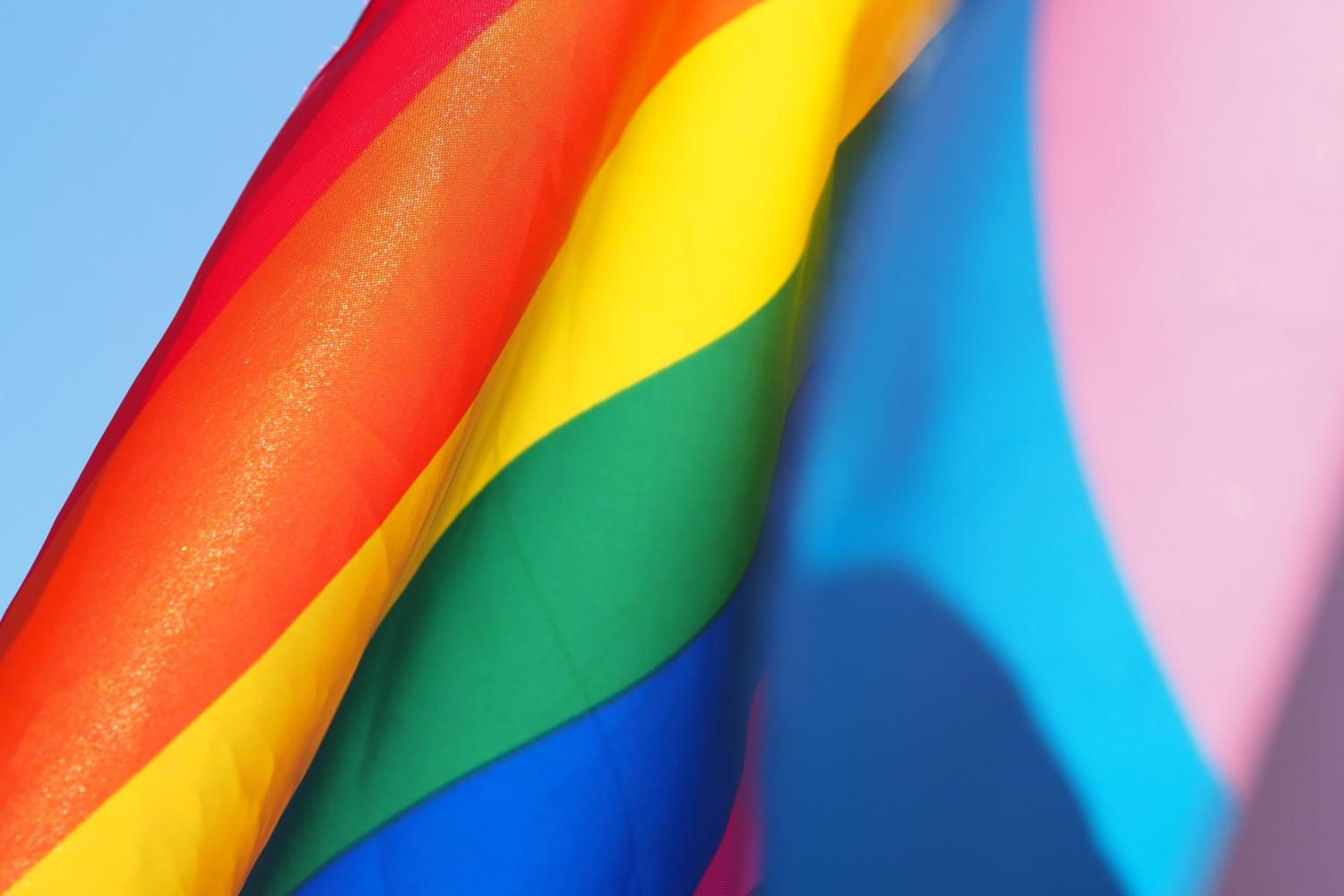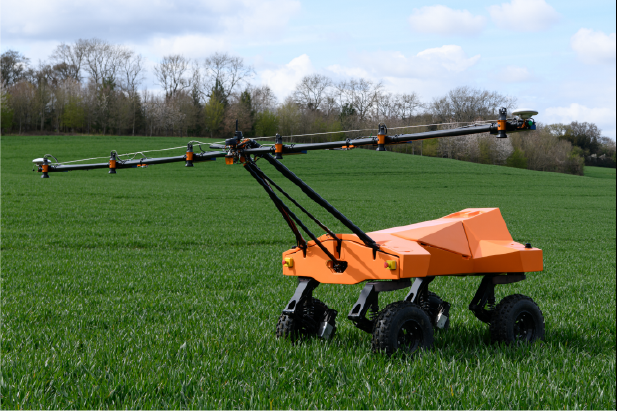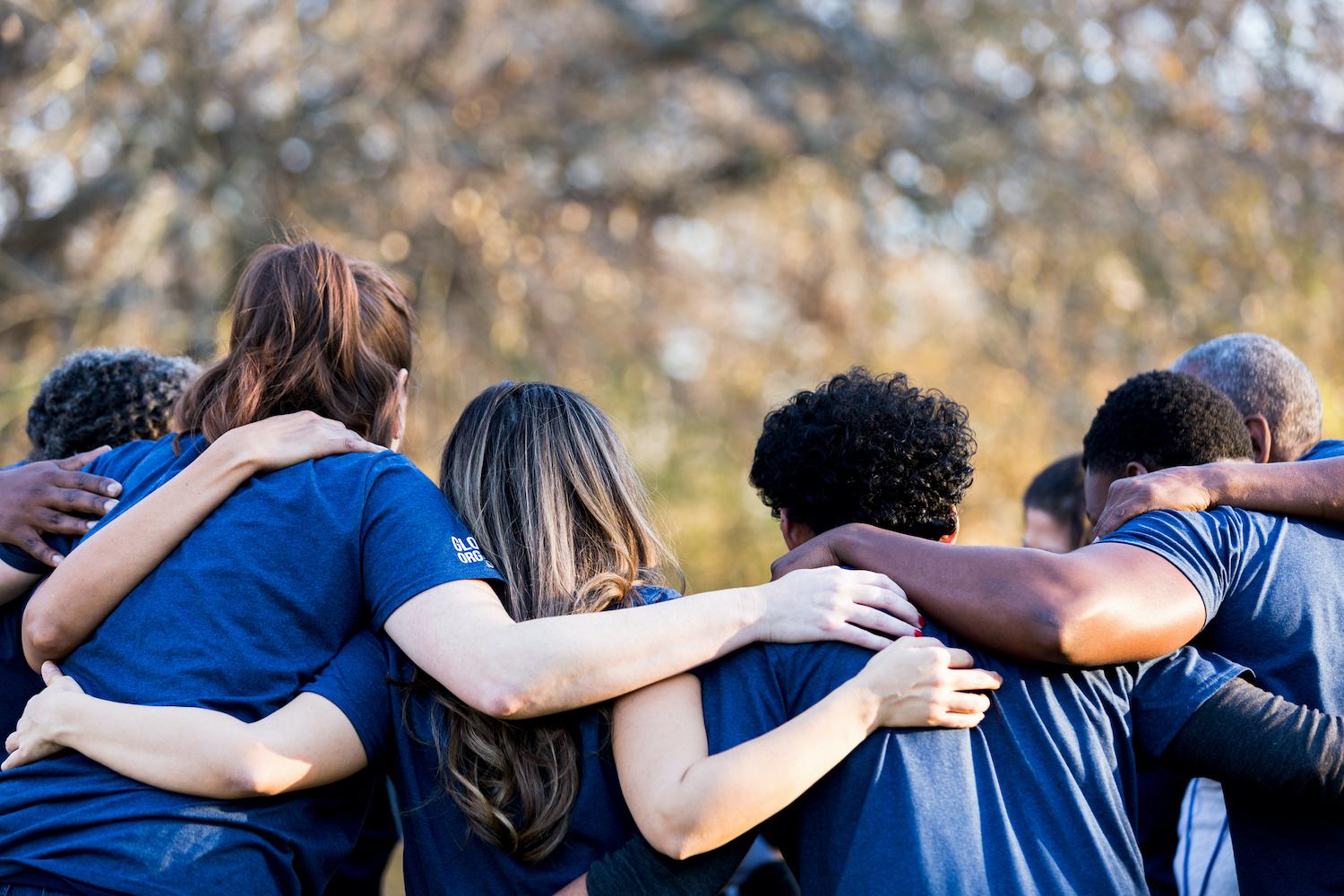More U.S. Corporations Join the Fight for Federal Action on LGBTQ Rights


A torrent of anti-transgender bills has been sweeping through state legislatures this year, and U.S. corporations finally seem to be pushing back. Rather than simply issuing individual statements affirming their support for LGBTQ rights, more than 400 U.S. businesses have joined together in the largest coalition of its kind in the U.S., and they have pledged to put their muscle behind the federal Equality Act.
Biggest ever display of support for LGBTQ rights: Why now?
It is no coincidence that a record number of businesses have organized in support of federal LGBTQ protections this year. The Equality Act has been introduced in previous legislative sessions, but the events of 2021 have made its passage more urgent than ever before.
This year has seen an unprecedented rampage against transgender Americans by lawmakers across the U.S. Since January, state legislators have introduced a record number of bills that would have an impact on transgender rights for both children and adults, numbering more than 100 pieces of legislation in 33 states by mid-April.
Editor's note: Be sure to subscribe to our Brands Taking Stands newsletter, which comes out every Wednesday.
Many of the bills are reportedly modeled on legislation composed by staff of the multinational legal organization Alliance for Defending Freedom, which is recognized as a hate group by the Southern Poverty Law Center.
As described by SPLC, stopping transgender youth from playing school sports is just a foot in the door for ADF’s global agenda. The organization aims to criminalize homosexuality in the U.S. and elsewhere.
SPLC draws attention to a 2012 speech in Spain by ADF’s then-global counsel Piero Tozzi, who said in part that “homosexual acts are incapable of bearing fruit — indeed, strictly speaking, they are not sexual, as they are incapable of being generative or procreative. Thus there is the need to desensitize and corrupt young minds, both to undermine resistance to the agenda and for recruitment among those that are at an emotionally vulnerable stage of development.”
More recently, SPLC drew a picture of ADF as a powerful international organization that “works with policymakers and other organizations to outlaw abortion, deny equality and marriage to LGBTQ people worldwide, and continue to push for a hard-right Christian theocratic worldview that is reflected in legislation and policies.”
LGBTQ rights and globalism at the door
Right-wing pundits and politicians have spent considerable energy falsely branding the Democratic legislative agenda as a socialist takeover orchestrated by globalists. Meanwhile, ADF and its boilerplate anti-transgender bills are actual globalism in the guise of legislation that can upend the lives of millions of U.S. workers and their families through their attack on LGBTQ rights.
The rising influence of an international anti-LGBTQ organization in state legislatures across the U.S. is clearly a matter of fundamental concern for American business leaders who recognize the bottom-line benefits of drawing their employees from the nation’s richly diverse pool of talent.
“Employers care about their employees' ability to rent an apartment, send their kids to school, visit the dentist and pick up the groceries free from discrimination,” the Human Rights Campaign, the largest LGBTQ advocacy group in the U.S., emphasizes. “They realize that when LGBTQ employees and their family members are protected in their daily lives, it makes them more secure and confident in their jobs, and also more productive.”
Next steps for the LGBTQ rights movement
Business leaders finally appear to be awakening to the danger of real-life globalists exercising their influence on state laws, contrary to the interests of U.S. corporations.
Earlier this week, the Human Rights Campaign announced that 416 U.S. businesses have now joined its ongoing lobbying effort in support of explicit federal protections for LGBTQ rights through the Business Coalition for the Equality Act.
The Equality Act has achieved some success this year, having passed the U.S. House of Representatives in February. Passage in the Senate, though, will be practically impossible. At least 10 Republicans need to join the Democrats for a filibuster-breaking majority of 60 in favor.
Nevertheless, this group does provide business leaders with an opportunity to make themselves heard. Their influence could become a deciding factor in the coming months as Democrats wrestle over the question of modifying or abolishing the filibuster, thereby enabling key legislation to pass with a simple majority of 51 votes.
Next steps for American democracy
In terms of bottom-line operations, the members of the Business Coalition for the Equality Act do wield a big stick. “The 416 member companies of HRC’s Business Coalition for the Equality Act represent a major swath of America’s economic engine, with member companies overseeing business operations in all 50 states, company headquarters spanning 33 states and a combined $6.8 trillion in annual revenue,” the Human Rights Campaign explains, adding that collectively they employ more than 14.6 million people in the U.S. alone.
In addition to employing 14.6 million people, the business coalition includes well-known names that touch practically every individual in the U.S. at some point in their lives, regardless of their political affiliation. The list includes Amazon, Best Buy, Coca-Cola, CVS Health, Dow, Facebook, Google, IBM, Kellogg, Levi Strauss, Marriott, Microsoft, Monsanto, Nike, Target, Unilever and Twitter, among 400-odd others.
As if that is not enough firepower, the Business Coalition’s membership roster currently includes 647 civil rights groups along with labor unions and religious, professional, and trade organizations across the U.S.
Unfortunately, for all its numbers the coalition has so far failed to make a significant difference as the wave of anti-transgender legislation continues to move through statehouses across the nation.
In addition, a concurrent flood of new state-based voter suppression bills is all but certain to cement Republican control over key statehouses in the coming years, leading to even more oppressive laws.
The real test will come at the federal level. U.S. business leaders will make a real difference if they mobilize their financial resources to support federal lawmakers working for passage of the Equal Rights Act, and stop devoting campaign funds to Republicans in Congress who supported the failed Jan. 6 insurrection.
Another potentially powerful aspect of the Business Coalition is the inclusion of leading labor unions alongside corporations that have gained a reputation for resisting unionization, with Amazon being one especially notorious example.
That is a significant turn of events, considering the historic role of unions in turning out the vote. The Business Coalition could help motivate some corporations to take a second look at their campaign donations and deploy more resources in support of pro-union candidates who also support LGBTQ rights.
Corporate support for the union voice already passed a test earlier this year when the Major League Baseball Players Association responded to a new voter suppression law in Georgia by successfully advocating for the organization to move the 2021 All-Star Game to Colorado.
Business leaders who come out in support of the Equality Act and voter rights may soon find themselves riding a wave of support from athletes in other sports. Earlier this week, nine other professional sports players’ unions signed on to a public letter asserting the universal civic responsibility “to defend the right to vote and to oppose any discriminatory legislation or measures that restrict or prevent any eligible voter from having an equal and fair opportunity to cast a ballot.”
Notably, mens’ professional basketball, soccer and football unions signed the letter along with unions that are in the crosshairs of anti-transgender legislation aimed at youth sports, including the National Women’s Hockey League Players Association, National Women’s Soccer League Players Association, Professional Women’s Hockey League Players Association, United States Women’s National Team Players Association, and the Women’s National Basketball Players Association.
It remains to be seen if ADF and its allies have awakened the sleeping dragon with their anti-transgender bills, or if the corporate response and rally for LGBTQ rights is all hot air and no action. However, the emergence of a union-corporate coalition on LGBTQ equality and voting rights is a promising sign that support for President Joe Biden’s legislative agenda will continue to grow stronger as the 2022 midterm election cycle gets under way.
Image credit: Cecilie Johnsen/Unsplash
Lenders Should Be Clamoring to Lend to Women Entrepreneurs. Why Aren’t They?


Who are the lowest risks for banks? Women entrepreneurs, new research reveals. If only we were getting credit for it. (And yes, I mean that in both senses of the word.)
Knowing that women receive less than 5 percent of small business loans, CNote partnered with ICA Fund Good Jobs, an Oakland, California–based community development financial institution that invests in high-potential businesses, to find out if women are riskier borrowers. ICA analyzed 10 years of loan repayment data from six CDFIs (community development financial institutions) participating in the Wisdom Fund, evaluating risk based on three factors: the probability of default, the likelihood of delinquency, and expected losses. It then applied a statistical model to predict how likely different groups of borrowers are to default on their loans.
Making the case for lending to women entrepreneurs
Three data points from ICA’s preliminary analysis stand out:
On average, women are a lower credit risk than men. ICA found that women are 2 to 4.5 percent less likely to default on loans than men.
Women of color are not riskier than other demographics. Breaking down the gender data, ICA found no statistically significant difference between women of color and other groups of borrowers in terms of default and delinquency rates.
Women entrepreneurs get smaller loans and may pay more for them. Despite their low risk profile, the study found that women typically get smaller loans than men—even when controlling for factors like industry, loan type, and loan purpose. Women also paid higher average interest rates over the study period.
These findings are particularly striking given that CDFIs primarily serve people and communities that are underserved by mainstream financial institutions, including women and people of color. We can only imagine the gap between credit and creditworthiness at traditional financial institutions, which can’t collect data on loan applicants that is unrelated to assessing their creditworthiness.
The next step: find out what’s driving these numbers
What’s going on here? We don’t know.
Maybe women are less comfortable taking on debt than men. Maybe structural bias works against women entrepreneurs in loan risk assessments and underwriting. Maybe women aren’t getting essential information about borrowing.
Maybe, we thought, we should just ask women.
Research is a key component of the Wisdom Fund, which CNote launched with CDFI partners in 2019 to funnel money from accredited investors into business loans for low- to moderate-income women, especially women of color. So, we’ve started our research with a human-centered design project focused on giving women of color borrowers the chance to speak for themselves about their experiences with the financial system - the good, the bad, and the ugly - and inform efforts to improve it.
We’ve partnered with Impact Experience to survey 50 to 60 women of color borrowers to learn how lenders can better serve them, and with 20 CDFIs to better understand the challenges that community lenders face when women of color come to them for loans. As part of this human-centered design project, 20 women participated in a two-day deep dive into the core challenges and opportunities around unlocking access to capital. At the end of this virtual gathering, we identified ways to remove barriers for women of color borrowers and connect them with networks that will help them grow their wealth and their businesses.
We can shape the future of finance
In the third quarter of 2021, we plan to share the insights and solutions that will emerge from this project with players across the financial services sector. However, we know change won’t happen by itself. We’re hoping to build a movement that will shape the future of the finance industry based on listening to, collaborating with, and learning from women entrepreneurs.
The project is now urgent. One fact that inspired the Wisdom Fund is that women are the fastest-growing group of entrepreneurs in the country and yet receive a paltry amount of capital. Another is that, as the traumas of 2020 made painfully clear, women of color don’t have equal access to opportunity in this country. Working together, we can fix these inequities.
Image credit: Unsplash
A Pivot in Canada That Helps Companies Promote Sustainability Practices


Leading business leaders and policymakers have traditionally led the case to pivot and integrate sustainability across business practices. These conversations have usually targeted large corporations and neglect small and mid-sized enterprises (SMEs) in many countries, including Canada.
At least, that’s according to the organizers of Montreal-based PIVOT. In conjunction with McGill University and the National Film Board of Canada, PIVOT shares stories of Canadian SMEs across the country that are embracing sustainable practices. SMEs account for closely 90 percent of Canada’s total private labor force and employ 10.8 million people.
Global sustainability action plans will need to include all businesses and industries, regardless of size – now, PIVOT is helping more companies find success while sharing their stories.
SMEs can pivot and help reduce a country’s environmental footprint
Led by McGill University Associate Professor, Dror Etzion, the goals of PIVOT include helping the general public understand the need for SMEs’ engagement in climate action; gain insight on the potential of these companies’ collective business impact; and empower other SMEs to adopt more sustainable business practices.
The project focuses on telling the stories of businesses in all major sectors including food, agriculture and manufacturing. The impact generated by several of these companies and business groups extends across industries. Take, for example, Rafiq Dhanji, the executive director of the Sustainability Leadership Program, based in Hamilton, Ontario. Dhanji helps businesses across all sectors engage in climate action by reducing their GHG emissions.
Another such project is Reid's Automotive Recycling, a business that reprocesses damaged or end-of-life vehicles by decontaminating and disassembling them and then resell those cars’ parts - reducing the need for building new ones.
SMEs have a plethora of opportunities to implement change coast to coast and affect national environmental goals. In 2018, Canada ranked as the 10th-largest GHG emitting country, accounting for 1.5 percent of global emissions. Despite the relatively low number, Canada’s per capita GHG emissions exceed the G20 average. The transportation, energy and industrial sectors are among the largest contributors to Canada’s emissions. Furher, between 1990 and 2017, Canada's total GHG emission increased by 19 percent.
Before COVID-19, and now - despite the country’s lockdowns and consequential decrease in emissions - Canada has not been, and is still not, on track to meet its 2030 nationally determined contribution goal: decrease GHG emissions by 30 percent below 2005 levels by 2030. This shortfall will consequently affect Canada’s alignment with the Paris Climate Agreement effort of limiting global temperature rise to 1.5 degrees Celsius.
Building an inspiring business community
In a recent interview with TriplePundit, Etzion explained the primary function of PIVOT: creating “peer to peer inspiration.” This means creating and sharing stores that will resonate with SMEs, which could then enable a social movement of adopting sustainable practices.
"The whole idea of the project is that SMEs don't really want to listen to me or to a politician or to a guru to tell them what to do," Etzion said. "SMEs really care about what others SMES are doing."
These stories are compiled on gopivot.org and according to Etzion, the group will use social media and marketing tactics to reach wider audiences. The project’s organizers will focus on community, engagement, building social networks and storytelling.
SMEs can take climate action right now
The conversations, inspiration and actions surrounding business sustainability can be attributed to consumer preferences as well. Etzion explained that consumers in industries like food, hospitality, cosmetics and fashion are increasingly seeking sustainable products and services. To meet these demands and help companies do their part to contribute to climate action, Etzion shared various ways in which SMEs can embed sustainability in the manufacturing of goods, delivery sources and sourcing.
For example, PIVOT has showcased Tall Grass Prairie Bread Company, which grinds its own grain and bakes its own bread and pastries, many of which have gained popularity. Before establishing the business, co-owner Tabitha Langel worked with various partners to understand market demand and provide a product that was both appealing to consumers and valuable to farmers.
For industries that serve consumers who aren’t inclined towards sustainability, Etzion suggested that SMEs can re-strategize their resources, adopt energy efficiency technologies and switch to renewable energy.
Flexahopper is one such company that exemplifies this shift. The plastic fabrication company based in Alberta has installed solar panels atop its molding plant in Lethbridge, which resulted in significant reductions in electricity costs.
"I think the next few years are going to be dramatic and meaningful in terms of more and more people becoming committed to this cause, recognizing its importance of allocating resources to it and doing meaningful things," added Etzion.
PIVOT illustrates that large-scale changes, such as efforts to decrease per capita GHG emissions or get Canada back on track for its national targets, is a collective and incremental effort. And going beyond competition, small and mid-sized enterprise owners can also look to each other for inspiration to develop more sustainable practices within their companies.
Image credit: Jopwell/Pexels
Speak Up on Social and Political Issues, Employees Tell the Boss


In case the recent spate of police shootings, violence against Asian Americans and the verdict in the trial of Derek Chauvin have not made it clear to business leaders, a recent survey that queried more than 8,000 employed adults concludes that executives are in a good place when it comes to speaking up about the most contentious social and political issues here in the U.S.
Six in 10 employees said they want their companies’ senior leadership and CEOs to take a stand, according to a CNBC/Survey Monkey poll completed last month and announced on Friday. In a challenge to the long-held assumption that politics should stay out of the office, about the same percentage of employees (61 percent) say they feel comfortable sharing their political views with their colleagues.
Not that corporate leaders necessarily agree with these sentiments: The higher up on the org chart, the more reticent an employee was to say that political issues and topics like social justice should be part of any public dialogue, according to the survey.
Editor's note: Be sure to subscribe to our Brands Taking Stands newsletter, which comes out every Wednesday.
Some of the demographic gaps in how employees feel about corporate activism aren’t surprising. Ethnic and racial minorities feel more strongly about such views than whites, women more so than men, and younger workers are more open to having a vocal CEO than their older colleagues.
Despite what may appear to be tension across the U.S. workforce, the data also shows that overall people are largely satisfied with their employment situation. Well-paid for their work? Done. Career advancement? Not bad — 6 in 10 feel confident about future prospects. The same goes for questions about how employees feel about being valued by colleagues, autonomy in doing their day-to-day tasks, and whether they feel as if they are doing meaningful work.
The difference, however, is that if employees feel as if their companies are making progress on the diversity, equity and inclusion (DEI) front, they then feel better about their work. If their employers are viewed as laggards on DEI, the CNBC/Survey Monkey survey data suggests they also feel less positive about their pay and future opportunities for career advancement.
“Just 60 percent of workers who think their organization isn’t doing enough in the realm of diversity and inclusion say they are paid well for the work they do, compared with 80 percent of workers who think their work is doing about the right amount of work on DEI and 82 percent of workers who think their company is doing too much to address DEI issues,” the survey’s authors wrote.
The return to the office vs. virtual debate and DEI may not intuitively seem related, but given the concerns many workers have about returning to the office in a post-COVID world, now would be the time for companies to ensure their workplace culture is one that makes everyone feel included and valued.
“As a new generation of workers assume leadership positions, executives would be wise to ensure that their place of work is welcoming to people of color. This is the time for businesses to ‘build a different corporate culture,’ and ultimately, one that suits a more socially aware younger generation,” said Malia Lazu, a lecturer at MIT’s Sloan School of Management, during a recent discussion with Forbes’ Ellen McGirt.
Image credit: Unsplash
How Weed Killer Robots Could Revolutionize Farming


It sounds like something out of a science fiction novel. Developers are deploying killer robots that blast their victims with 8,000 volts. There is a crackle, a puff of smoke, and then the target is dead. In this case, this invention is being heralded for promoting sustainable agriculture by reducing pesticide use and promoting soil health.
Bringing artificial intelligence, and killer robots, to farming
The Small Robot Company (SRC) is an agri-tech startup that brings artificial intelligence to the farming industry. Ben Scott-Robinson, CEO of SRC, believes farming will radically change in the next two decades and become unrecognizable. His vision embodies weed control without the use of chemicals with agility and precision.
SRC is developing a team of robots for deployment on farms. “Tom” (seen above) fulfills a weed-mapping role and can monitor 50 acres of crops daily. Complete with LED lights, Tom and his family of killer robots can even work at night while farmers sleep. “Wilma” is the brains of the operation and processes the data from Tom. She examines the health of each plant and then gives orders to “Dick.” He then kills weeds by zapping them instead of relying on herbicides. SRC just introduced Tom to the United Kingdom market, and Dick will begin field trials in October.
Utilizing RootWave weed zapping technology
Both Tom and Dick use an autonomous electronic platform powered by a Tesla battery. Dick uses a weed zapping technology by RootWave, which was named one of the most disruptive companies in the U.K. in 2019. It has received grant funding from the U.K. government to create next-generation products. RootWave has also released the RootWave pro, a professional hand weeder and a tractor-pulled weeder product for fruit crops.
RootWave technology zaps weeds by generating heat directly at them and boils the plant from the inside. It leaves weeds in place, where they naturally decompose. This no-till approach helps build soils, prevent erosion and capture carbon. The same technology can also help eliminate tenacious invasive plants that can overtake native plants.
Boosting soil health and pollinator habitat
“The way farming needs to be done is changing,” said Scott-Robinson in an interview with the Guardian. “It isn’t just about producing large quantities of food; it’s also about caring for what happens in the field.” Artificial intelligence can gather information about soil health and the prevalence of pollinators, enabling a fundamentally different approach to farming.
Now, SRC is exploring the concept of weed recognition because not all weeds are harmful to crops. Some are essential fodder for pollinators, while others may help with providing nitrogen. SRC is also researching how to analyze soil health and biodiversity by using a microphone to gather data on bird songs and other pollinators.
Avoiding harmful pesticide use
Sadly, studies show that 95 percent of herbicides do not reach their targeted pests, and they often end up in waterways. Herbicide-resistant weeds are a growing concern to many farmers, yet they can be challenging to identify. Prevention strategies include reducing pesticide use, rotating crops and mechanical weed control practices. Numerous pesticides are suspected or known carcinogens. Sadly, many farmworkers are poisoned by pesticides each year in developing countries; depending on the source cited, as many as 20,000 deaths annually are attributed to these chemicals. Hence there’s an opening for these killer robots.
“The dream double bottom line for farming is increasing yields sustainably. For at least the last two decades, farmers have been trying to increase yields while reducing damage to the environment,” said Sam Watson Jones, President and co-founder of Small Robot Company, in a press release. “But the weed burden necessitates treatment - and unfortunately at the moment, we have a farming system which dictates a blanket approach.”
Robots specifically designed for the farming industry already exist but overall, they are new to the market. EcoRobotics uses robotics to dramatically reduce the use of pesticides with a robot that uses artificial vision. Vitibot has an electric vineyard robot that handles mechanical weeding, spraying and stripping. Naïo Technologies has produced three models the weed and hoe farmland in various applications, including vineyards and large-scale vegetable farms.
“How quickly farmers take up the use of robots is yet to be answered,” said Andrew Diprose, the CEO of RootWave, in an interview with the Guardian. “We have a solution that allows you to weed your fields without chemicals, carbon emissions, tilling the soil, and at some point, without an operator. It really is the future, and it’ll take us a bit of time to get there. But we will get there.”
Image credit: Small Robot Company
Can This Model of Academic, Emotional and Financial Support Root Out Racial Disparity in Education?


At its most basic, education is about uplifting the individual. That means providing the tools and knowledge necessary to give people choices about their futures and a chance to be productive, and hopefully happy, in their lives and work.
Such is the mission of Anna Julia Cooper Episcopal School (AJC) in Richmond, Virginia. Small in size but overflowing with caring and ambition, the 12- year-old school, which calls itself “a community of affection,” serves 119 students in grades four through eight, most of whom are children of color from low-income families. The school’s leave-no-need-unmet approach results in a majority of graduates enrolling in private high schools and about a third heading to college. Some even return to AJC to work.
“This is an exercise in equity,” said Head of School Michael Maruca, who has been with AJC from the beginning. “This is a practical, concrete institution trying to make equity real. These kids’ families won't get this experience elsewhere.”
Education with a focus on equity
The school’s namesake, Anna Julia Cooper, was an educator, author, activist and prominent African-American scholar, born into slavery in 1858. She died in 1964 and is remembered for her work promoting education and civil rights for African Americans and women.
Cooper’s vision of making education attainable for everyone is one the AJC school takes on for itself. Seventy-five percent of students come from nearby public housing developments in a neighborhood in Richmond's East End. As of October 2020, the local poverty rate was 65.2 percent and the unemployment rate 12.9 percent, according to census data.
All students receive free tuition, the equivalent of $14,000 a year. And most enter reading below grade level, Maruca said, so the curriculum has a heavy emphasis on basic skills. The school also administers fewer standardized tests than public schools to give staff more instructional time.
“In our mission, we talk about helping students change the trajectory of their lives,” Maruca told us. “Every single day, every hour, we give kids experiences, love, safety and nurturing, and we create a center of gravity that serves as a counterweight to all of the difficult challenges they carry. We try and educate them in the traditional sense as well as we can, in writing, reading and math. When you become proficient, you feel good; when you become competent, you become confident.”
Eliminating race and family income as barriers to education
For decades, Black and Hispanic students, particularly those from low-income households, have been less successful in school than their white and Asian-American counterparts.
“The National Center for Education Statistics reports consistently growing or barely narrowing gaps between white and Black and white and Latino students in math and reading test scores since the early 1980s, as well as in the rates of attainment of bachelor’s or higher degrees since the 1990s,” Stella M. Flores, Director of Access and Equity for the Steinhardt Institute for Higher Education Policy at New York University, wrote for Inside Higher Ed in January.
Another recent study from Stanford University attributed the gap in part to the high concentration of Black and Hispanic children in high-poverty schools with limited resources. “If we want to improve educational opportunities and learning for students, we want to get them out of these schools of high-concentrated poverty,” Sean Reardon, a professor at Stanford’s Graduate School of Education and leader of the study, told Reuters.
The team at AJC has managed to bring quality education and resources to a struggling neighborhood, with positive results. One hundred percent of the school’s first graduating class, in 2012, went on to attend and graduate from high school, and 70 percent of those alumni enrolled in college.
At the time AJC was founded, people in the community thought middle-school-aged children were the most vulnerable to dropping out of school or getting into trouble in the neighborhood. But this is by no means the only group that could benefit from the school’s model, Maruca said. “The needs are pressing and unending in an area like this,” he told us. “Now we are working our way back down.”
To do that, Capital One's New Market Tax Credit Team (NMTC) is helping to fund a $9 million expansion that will allow AJC to almost double its population to 224. The additions include a gym and more classrooms so the school can begin admitting kindergarten through third-grade students. This fall they’ll enroll students in the second and third grades, with kindergartners and first graders arriving fall 2022. “When the new buildings open, I’m probably going to cry because of all the time and effort invested,” Maruca said.
The goal of the New Market Tax Credit program is to identify areas of need in underserved communities and fund projects to meet those needs, said James LaFleur, a relationship manager with Capital One. “We see our transaction as allowing at least 100-plus students to get an in-person education that is not easy to come by,” he told us. “This way, more kids can be involved.” This investment fits perfectly within Capital One’s Impact Initiative, an initial $200 million, five-year commitment to the advancement of socioeconomic opportunity.
Academic and emotional support: A winning combination for students and families
While the number of students at AJC is a fraction of the 24,000 in the city’s public schools, the Richmond Public Schools’ high-school graduation rate for 2016-17 was 75.39 percent, which shows the impact of AJC’s approach of providing students and their families with high levels of academic and emotional support. Breakfast, lunch and snacks are free, and students have access to a number of after-hours activities. And a month of summer school is mandatory.
The helping hands stick with students even after they leave: An extensive graduate support program assists AJC students in applying to private high schools. If someone gets accepted to a school and the whole tuition isn’t covered, AJC makes up the difference. Staff members also keep tabs as students progress through high school and help them apply to college or look at other options.
“We’re in it for the long haul,” Maruca said. “There is no magic formula. The best possible things we can give them are to be safe and a nurturing environment. We used to have a lot more disciplinary issues, but the culture we’ve created is so strong, those have dropped off. We try to teach the students that when they do good things, good things happen. That’s how the world works.
“I tell teachers to focus on the kids standing right in front of them; whatever is happening now is what they should focus on. We’re blocking and tackling. We’re just trying to move the ball down the field.”
The school already has its success stories. One alumna — who grew up in a local public housing development and often asked Maruca to pick her up and take her home — is now back at AJC. The former student went on to attend an independent high school and graduate from Randolph Macon College, and now she works with AJC alumni. “When she talks, kids listen to her,” Maruca told us.
Another student overcame numerous obstacles in his life and at one point was living with a teacher, Maruca went on. But he graduated, attended an independent high school and joined the Marines. Now, he wants to join the police force, which came as somewhat of a surprise to his former mentors. “He is a completely different person,” Maruca explained. “I would never have guessed he would want to be a police officer.”
Room to grow: Financial investment helps this school serve more people
At AJC, staff members are excited to work with younger students. “The best time to begin education is in utero, but the closer you can get to that, the better,” Maruca continued. “The sooner we can get started with those goals, the less ground there is to make up and we have more time to work with them. The reading needs [of the new students] is going to be overwhelming.”
AJC staff are interviewing potential students who have not been in school for all of first grade. With many more applications to the school than it has openings, staff weigh factors such as income — family income must be at 130 percent of the federal poverty level or lower — with preference to students who live in one of the four low-income housing buildings in the area and have siblings attending the school.
The biggest daily challenge is to keep at it in the face of long odds, Maruca said. “The folks we work with are always coming up against limits, either in terms of the concrete hope they have for a different future or because the gravitational pull of their environment is so strong, or they are running out of data on their phone, and then everything in between,” he told us. “Students all have something inside of them — we try to provide the environment for seeds to develop and grow.”
This article series is sponsored by Capital One and produced by the TriplePundit editorial team.
Image credit: iStock courtesy of Capital One
Financial Giants Keep Boosting Their Sustainable Investments


Recently, the banking giants JPMorgan Chase and Citigroup made commitments to move trillions of dollars within the coming decade towards a variety of sustainable investments. JPMorgan Chase has vowed to put $2.5 trillion towards areas such as renewable energy, sustainable agriculture and developmental finance. Citigroup on the same day made a commitment to $1 trillion over ten years to “sustainable finance,” an umbrella term which includes half of the capital going towards climate solutions, and the other half going towards issue areas like health care, racial equity and affordable housing.
Similarly in January of this year BlackRock, the world’s largest asset manager with nearly $7 Trillion in assets, made a commitment to sustainability by demanding that those companies with which it does business disclose how they are pushing towards a net-zero economy. BlackRock also joined an investor-led initiative to ensure corporate greenhouse gas emitters take action against climate change. That announcement helped balloon its initiative to what the firm says is over $41 trillion in sustainable investments or committed assets towards this cause.
Increasingly, we are seeing that the world’s largest financial institutions are having a greater say in how business takes on the existential threat of climate change. However, there are concerns within the environmental community that these players aren’t taking these actions in good faith and with an eye towards a more sustainable and equitable economy, but rather cashing in on a “trend” or simply protecting their own necks against the plethora of environmental risks they see growing. On that point, Swiss Re recently warned that climate change could cut the world economy by $23 trillion by 2050.
So, should these financial giants be trusted to be legitimate environmental stewards who will work towards the drastic changes we need to combat climate change, or are they simply being reactionary to the ongoing concerns by insurance and risk experts?
Pressure from environmental, sustainability and racial equity activists have forced the issue of climate change, and now the global financial sector has decided that it too wants to be a part of the movement. The leverage that large capital firms can place on others, even if done reactively, can help to stem the tide of carbon pollution and shift huge amounts of necessary resources and funding to areas like renewable energy, natural resource management, sustainable farming and carbon capture. Our current global climate crisis efforts so far have been decades behind and severely underfunded, and so any influx of capital that can be used to combat the climate crisis will be seen as a worthwhile investment.
While these vows by the world’s largest corporations should be taken with a grain of salt, these sustainable investments are a great start. To that end NGO’s should also monitor these commitments to ensure that these pledges of sustainable investment include no greenwashing. However, our climate future depends on the buy-in by the business community to agree that climate change is real, it has real world detrimental impacts, and if we do not change the ways in which we conduct business things will get worse. In making these trillion-dollar, long-term sustainable investments, these companies are agreeing with those terms and acknowledging that things must change, and that they have a part to play in that necessary change.
Image credit: Mike Mozart/Flickr
Coming Soon: Plant-Based Burgers and Chicken 2.0


All right, so technically no one is using the 2.0 cliché for new fake meat options, but for fans of plant-based burgers and other fake meats, there’s some good news on the horizon.
As announced on April 27, Beyond Meat will be rolling out what it calls its new 3.0 recipe for its plant-based burgers at stores; and over the weekend at six pop-up stores in large cities across the U.S., folks had the chance to sample the new recipe.
According to the company, these plant-based burgers will have 35 percent less fat and saturated fat than the conventional 80/20 ground beef found at supermarkets. That’s good news for omnivores who enjoy a decadent burger from time to time (or many a time) but might be concerned about these products’ saturated fat content.
While few would quibble with Beyond Meat’s claims that its environmental footprint is far lighter than that of conventional beef, the impact on human health is a different story, depending on which nutritionist you talk to. While Beyond Meat and its competitors’ plant-based burgers were created less for vegetarians and vegans and more for consumers who eat meat but don’t dig its carbon footprint or cringe over animal welfare concerns, there is still that health concern: One of the burgers’ ingredients, coconut oil, is of concern to those who are monitoring their saturated fat intake or want to avoid a lecture from their doctor.
As for those who seek that punch of protein, the new patties will be a fine option for the grill or skillet; Beyond Meat said the new plant-based burgers’ nutritional profile will be similar to that of conventional beef, so if you’re worried about getting enough B-vitamins or minerals like iron, you’ll be set.
With this news, it’s clear the company refuses to stay complacent and that the Beyond Burger is here to stay. The company’s products are far easier to find than when its plant-based burgers were first launched five years ago – more fast food chains include a plant-based burger or taco option, and even some CVS stores carry the product in case someone needs a last-minute addition for that skillet meal or barbecue.
But Beyond Meat isn’t only bullish on fake beef. As announced on news sites including Bloomberg, its pea-based fake chicken product, which landed the company on the map almost a decade ago, is coming back, though assumedly with a slightly different ingredient profile. Once readily available in the cold case in then the freezer section of supermarkets, the packages of what appeared to look like shredded chicken were discontinued two years ago. That turn of events was a setback for the likes who appreciated how well they tasted in a fake fajitas or stir-fry dish. It was also the foundation of a scrumptious alternative Sonoma chicken salad available at many Whole Foods’ deli sections, the taste of which was to die for – a feeling that also ensued as its price was $13 to $14 dollars a pound. No official announcement has been made yet, but for sure the company’s investors will respond in kind if and when these new products roll out.
Image credit: Beyond Meat
Is the World Ready to Eat Just Lab-Grown Meat?


Some might know Eat Just, Inc. for being the first company worldwide to introduce lab-grown chicken, better known as cultured meat, for safe human consumption. Now the California-based company made waves again by partnering with Foodpanda, Asia’s top grocery and food delivery platform, to supply cultured meat to your table for the first time — if you live in Singapore.
Eat Just dishes emerge from the lab
Since April 22, Singaporeans have been able to choose from three cultured chicken dishes curated by the Eat Just Good Meat brand for delivery via the Foodpanda app. This follows Good Meat’s debut in at a Singapore restaurant back in December of 2020, shortly after the Singaporean government became the first in the world to approve cultured meat.
According to Eat Just, Good Meat is sustainable, and Foodpanda is distributing the products in a more responsible way. Each order is delivered by Foodpanda riders on e-bikes and comes in an eco-friendly packaging together with a Google Cardboard VR headset. While having an in-home tasting experience, diners can use the headset to enjoy an immersive film about environmental protection.
Responses amongst those who have tried Good Meat have been mostly positive. Findings show that 70 percent of Singaporeans who have tried Good Meat stated that its taste was as good or better than conventional chicken, and almost 90 percent of those diners said they would substitute traditional chicken with cultured chicken.
In the upcoming months, Good Meat and Foodpanda say they plan to offer new dishes for delivery and seek to work with other restaurants in Singapore.
Cruelty-free meat trends outside of Singapore
But besides creating a different, and apparently tastier, culinary experience at home, why is this important?
For starters, lab-grown meat (also called “cultured meat”) has been reported to have a less harmful impact on the environment. The procedure could decrease energy consumption by more than 50 percent and use 100 times less land than that needed to raise livestock. According to The United Nations Food and Agriculture Organization (FAO), livestock production is responsible for around 14 percent of greenhouse gas emissions, so pollution is reduced as well.
On top of that, new developments such as lab-grown meat could save countless numbers of animal lives that are usually object to unethical farming practices. As founder and CEO of Eat Just, Josh Tetrick, stated earlier this month: “I care deeply about mitigating climate change and about preserving biodiversity. But there's something deep in our value system about behaving in a kind and caring way, and our food system should represent that.”
“Food is at the core of our business, and ensuring that we have a sustainable food ecosystem is an important agenda for us,” added Jakob Angele, the CEO of Foodpanda APAC, in a public statement.
One question that remains is how feasible it is for other country’s food and restaurant sectors to adopt these products and how quickly such a shift could occur.
Challenges lie ahead for lab-based meat
According to The Good Food Institute, there are many challenges that governments and food countries address before cultivated meat becomes widely available and cost-effective. “The limiting steps to ultimately making this ubiquitous are regulatory approval, scale and consumer education,” said Tetrick. “We can’t just focus on one, we’ve got to focus on all three.”
Some companies, such as the Korean startup DaNAgreen, appeared to have overcome the cost obstacle, and plan to enter the Singapore market in 2021. The Belgian startup Tiamat Sciences claims to be joining the competition soon as well. Further, a restaurant in Tel Aviv has been testing cultured chicken, although as of press time it is still in development stage.
It might take a while for lab-grown meat to become available in the U.S. given that a regulatory framework for cultured meat is still in its infancy. The good news is that collective efforts are moving in the right direction: Leading cultured meat startups such as Memphis Meats, Eat Just and Finless Foods have teamed up to form a lobbying group to work with U.S. regulators. To that end, Memphis Meats, Eat Just and Finless Foods have teamed up to form a lobbying group to work with U.S. regulators in a bid to accelerate the process.
"After Singapore we'll move to the U.S. and Western Europe," said Tetrick.
The partnership between Eat Just and Foodpanda marks an important milestone in the mass adoption of cultured meat. The partnership between the two companies increases the product’s awareness and interest, and it makes it potentially available to thousands of homes.
“We are hoping and expecting that the U.S., China, and the EU will pick up the gauntlet that Singapore just threw down,” asserted Bruce Friedrich, executive director of The Good Food Institute. “Nothing is more important for the climate than a shift away from industrial animal agriculture.”
"As nations race to divorce meat production from industrial animal agriculture, countries that delay their investment in this bright food future risk getting left behind,” Friedrich added.
Apparently, Winston Churchill had envisioned such a development in the works, when in 1931 he predicted, “We shall escape the absurdity of growing a whole chicken in order to eat the breast or wing, by growing these parts separately under a suitable medium.” It is yet to be seen if we will be able to fulfill his desire.
Image credit: Eat Just
The COVID Recovery Isn’t Looking ‘Green’ So Far, But it Should


Already, the pope, the secretary-general of the United Nations (UN), and even 40 million global health professionals have called for a “green” COVID recovery. The overwhelming reason? Global resiliency. Why, then, haven’t nations been heeding the advice and decarbonizing their economies? According to a new International Energy Agency (IEA) report that evaluates global 2021 emissions and energy demand, energy consumption is set to increase this year, with a widespread doubling down on fossil fuels. This year may see the second-largest annual increase in CO2 emissions, the IEA warns.
Why does a COVID recovery mean we must build back greener?
A green global recovery, of course, supports the aim of the Paris Agreement to keep global climate well below 2 degrees Celsius above pre-industrial levels. It also supports well-rounded economic recovery and long-term economic resiliency.
Last summer, the World Resources Institute published a report, “5 Pillars for a Green and Resilient Recovery from COVID-19.” One of these pillars — helpful to remember as governments create regulations and pass legislation to stimulate their economies — is that global crises are often interrelated. Climate change, for example, has the potential to increase the frequency of banking crises by at least 26 percent, a 2019 study published in the journal Nature Climate Change found.
The economic benefit of green recovery is backed by data. When comparing two hypothetical recovery plans — one incorporating a green recovery and the other focusing on a COVID recovery or “return to normal,” Cambridge Econometrics and the We Mean Business coalition found a distinct difference in results. While both boosted output and employment, a green recovery produced a consistently larger impact with potentially long-term economic benefits, the study found. Applied to a selection of national contexts, the “Green Recovery Plan” produced the best results across the board not just for emission reductions, but also for GDP and employment.
So far, economies are returning to status quo energy production
It may come as no surprise that renewables have grown during the pandemic — a trend that IEA reporting confirms. The IEA expects renewables to account for more than half of the increase in global electricity supply in 2021. Simultaneously, though, fossil fuels are rebounding. Demand for the dirtiest offender, coal, is on a path to increase by 60 percent more than all renewables combined. This uptick of 4.5 percent, exceeding pre-pandemic levels, even approaches coal’s 2014 peak level, the report adds.
Growth in coal doesn’t exactly align with a clean or long-term COVID recovery plan. Even the United Mine Workers of America (UMWA) released a statement this week in support of new clean energy jobs, recognizing the need for job security in a decarbonizing world.
Although carbon emissions decreased by over 6 percent in 2020, any temporary progress can be easily reversed. This year’s increase in fossil fuel demand could bring CO2 emissions to one percent below 2019 emissions levels, the IEA notes.
Thus far, government investment in fossil fuels for COVID-19 recovery has outweighed contributions toward renewable energy by four percentage points, according to the NGO-backed energypolicytracker.org. Just over 40 percent of public money directed at energy has gone toward fossil fuels.
Guidance for more resilient recovery plans
The Biden administration has already taken a step toward a green recovery with the introduction of its infrastructure bill, currently in process through Congress. Recently, France and Germany also unveiled green recovery plans. For other nations following behind, the Organization for Economic Co-operation and Development (OECD) has some recommendations for a long-term COVID recovery strategy that may help. Besides simply starting to “walk the talk,” its advice includes broadening measures to touch sectors such as agriculture, waste management and forestry, as well as investing in skills, innovation and job creation to ensure the transition to a more resilient economy is also just and equitable.
A well-executed COVID recovery could prove to be an opportunity for nations to do an about-face toward a cleaner economy. UN Secretary-General António Guterres summarizes the impetus well in his 2020 New York Times piece: “For years, we have failed our young by damaging the planet and failing to protect the people most vulnerable to crises. We have a rare and short window of opportunity to rectify that — by rebuilding a better world, not reverting to one that is good for only a minority of its citizens.”
Image credit: Thomas Richter/Unsplash